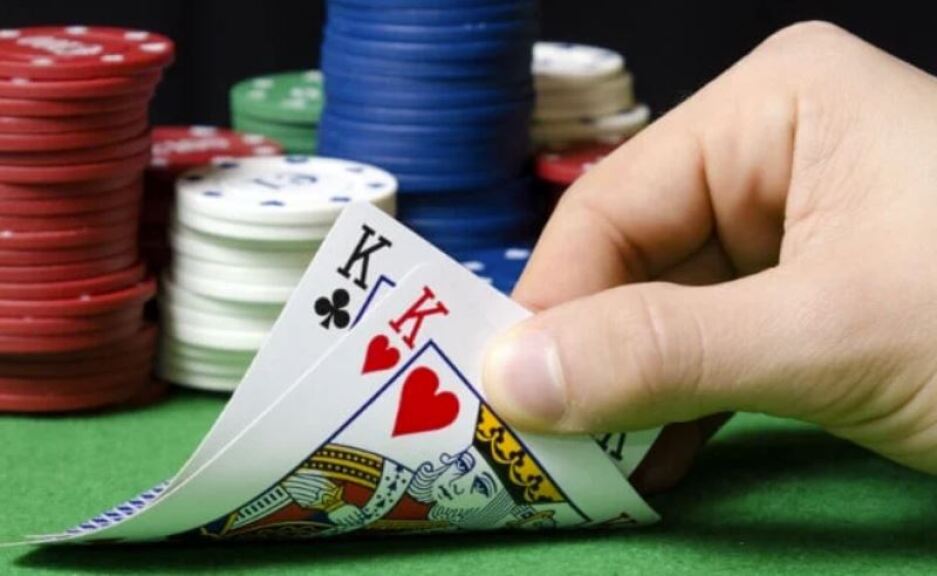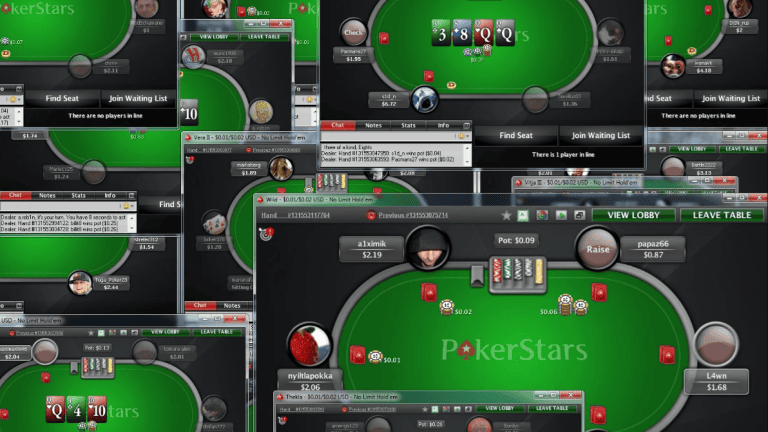When you first start playing poker, it's easy to feel overwhelmed. Every hand feels different; your opponents seem unpredictable, and the decisions just keep coming. But what separates solid players from the rest isn't luck or intuition — it's structured thinking.
This article will show you a simple framework to help you think through poker hands like a pro. Whether playing Texas Hold 'em online or at your local home game, these principles will help you make better decisions and avoid common beginner mistakes.
Step 1 – Assess Your Hand Strength: Identify Premium, Strong, Speculative, and Trash Hands
Before making any smart decision at the table, you need to understand what you're holding.
This doesn't just mean "I have top pair" or "I have pocket queens." It means putting your hand into context.
Start with raw strength:
- Premium hands (AA, KK, QQ, AK suited) = Play aggressively.
- Strong hands (JJ–99, AQ, AJ suited) = Usually worth a raise.
- Speculative hands (small pairs, suited connectors) = Play only in the right spots.
- Trash hands (72 offsuit, etc.) = Fold and forget.
Postflop, you can also put your hand into context. For instance, ️♣A♦️A is a premium hand, but on a flop like ♠6♠7♠8, you can list a ton of hands that are stronger. That is relative hand strength; you need to consider this on each street. In our example, straight flushes, flushes, straights, sets and two-pairs are all stronger than AA. Actually, this list contains hundreds of combinations that are stronger than your holding. That's why you need to downgrade your premium hand into something like a showdown hand or bluff-catcher. It is still ahead of a big part of your opponents' range but isn't worth the play for stacks.
So you need to ask:
- Is this hand strong now, or does it need to improve?
- What are the chances of improving on the next card?
- Am I likely ahead or behind based on the action so far?
Example: You're holding ♠A ♠Q on a flop of ♦️Q♣7♥2
Top pair with a strong kicker; this is likely the best hand right now.
Knowing this, you can plan the next step.
Step 2 – Read Opponents’ Ranges: How to Estimate What They Might Have
Once you understand your hand, shift focus to your opponents. Ask yourself:
"Based on what they've done so far, what could they be holding?"
This is called putting them on a range — not a specific hand, but a group of likely hands.
How to narrow an opponent's range:
- Preflop actions: Did they limp, raise, 3-bet? A 3-bet usually means strength, but approach it carefully; there are inherently polar 3-bet ranges like BvB.
- Position: Players raise wider from the button than under the gun.
- Post-flop behavior: Passive check-calling often signals draws or medium strength. Big bets may mean a monster — or a bluff, which is naturally a more polarized range.
Think like a detective. Are they scared if they raised preflop and now check on a scary flop? Slow playing? Missed entirely? Don't wait until the river to rethink the hand; you won't have enough time. Go street by street, narrowing down their ranges.
Tip for beginners: Start by categorizing ranges broadly:
- Strong made hands (top pair+, overpairs, sets)
- Drawing hands (straight or flush draws)
- Air/bluffs (missed hands with little showdown value)
Example continued: Your opponent called your raise preflop and checked the flop. It is very likely your opponent would check on this flop her entire range OOP. We cannot narrow her range at the moment; we need to act based on the flop texture and positions (often bet for a small size) and see what comes next.
Step 3 – Define Your Objective: Value Betting, Bluffing, Calling, or Folding
This is the question most beginners skip — and it's the most important. Every action in poker should have a reason. Before you click bet, call, or fold, ask:
Am I:
- Betting for value? (Worse hands will call)
- Betting as a bluff? (Better hands might fold)
- Calling to improve? (Implied odds are worth it)
- Folding to minimize losses? (I'm likely beat and don't have the odds to call)
If you don't know why you're making a move, you're probably just clicking buttons. That's how money gets burned.
Example continued: You have top pair, top kicker. Your opponent checked to you.
— If you bet here, you're betting for value — hoping worse hands (like QJ or JT) will call.
— If they check-raise, pause and re-evaluate: Are they repping strength, or bluffing?
Step 4 – Anticipate Opponents’ Reactions: Predict What They’ll Do If You Bet, Call, or Check
Now you're thinking ahead. Poker is a game of incomplete information, but you can still anticipate reactions.
Ask yourself:
- If I bet, what will they likely do with a worse hand?
- Will they fold their draw? Call with second pair? Raise as a bluff?
- If I check, will I give them a free card — or induce a bluff?
Beginner tip: Think one street ahead. Don't plan the river on the flop. Just try to anticipate what happens next.
Example continued: You bet half the pot on the flop, and they call.
— This narrows their range: they likely have a weak queen, a draw, or a pocket pair like 88.
— Now plan your turn play: Do you bet again to extract more? Check to control pot size.
Common Beginner Mistakes and How to Fix Them
Poker is deceptively simple to learn but incredibly complex to master. Beginners often fall into a handful of common traps that sabotage their long-term success. Here's a breakdown of four frequent mistakes and practical fixes to help sharpen your game.
Mistake 1 – Playing Hands Without a Plan (And the Simple Fix)
The Mistake:
Many beginners enter pots without a clear idea of why they're in the hand or how they intend to proceed. They limp in because their cards "look decent" or call bets without considering the bigger picture. This leads to reactive, not proactive, play—essentially guessing at every decision point.
The Fix:
Before you take any significant action (calling, betting, or raising), pause and ask yourself:
- What is my goal in this hand?
- What is my position relative to the other players?
- How strong is my hand really in this spot?
- What do I know about my opponent's likely range?
Answering these questions helps you build a coherent strategy. For example, you might say, "I'm raising preflop because I'm in a late position with a strong hand and want to isolate the limper." This mindset shift from reacting to planning will make your decisions more deliberate and less random.
Mistake 2 – Focusing Only on Your Own Cards (Why Range Thinking Matters)
The Mistake:
A classic beginner mindset is to focus solely on your hole cards without factoring in what your opponent could be holding. This tunnel vision leads to overvaluing medium-strength hands and getting caught off guard by obvious threats.
The Fix:
Start thinking in ranges—the spectrum of hands your opponent could logically have based on how they've played so far. Even a rough estimation like, "They raised under the gun, so they likely have big pairs, strong aces, or suited connectors," gives you a strategic edge.
As you gain more experience, your range reading will become more precise. But even beginners can make significant improvements by asking, "What could they have here, and how does that compare to my hand?" before acting.
Mistake 3 – Betting Without Purpose (Three Legitimate Reasons to Bet)
The Mistake:
Many new players bet because they feel like they should—or worse, because they hope to "get lucky" or "see where they're at." These bets lack clear goals and often lead to confusion or spewing chips.
The Fix:
Every time you bet, you should know why you're doing it. There are generally three solid reasons to bet:
- For value – You expect worse hands to call.
- As a bluff – You expect better hands to fold.
- Any other reasons to bet are incomplete/insufficient, such as denying EQ, aka protection, when you want to make opponents fold hands that could outdraw you, etc.
Train yourself to articulate your reasoning mentally. Say to yourself (even silently), "I'm betting because worse hands like top pair with a weak kicker will call," or "I'm bluffing here because my line represents a strong hand and they're likely weak."
If you can't justify your bet with a reason like the ones above, it's probably better to check.
Mistake 4 – Ignoring Position (How Seat Advantage Changes Hand Value)
The Mistake:
New players often underestimate how important their position is in poker. Playing the same hand in early versus late positions can be a world of difference. When you're first to act, you're essentially flying blind.
The Fix:
Understand that the later you act in a hand, the more information you have. You can see how many players are in the pot and how strong their actions suggest they are, and you can make more informed decisions.
As a rule of thumb:
- Play tighter and more cautiously in early positions.
- Open up and play more hands in late positions (like the cutoff and button), where you can leverage your informational advantage.
- Respect the power of position. It can turn a marginal hand into a profitable one and a decent hand into a liability.
- Understand that acting last gives you more information and control. Play tighter when out of position.
Step 5 – Train Your Poker Brain: Practice the 4‑Step Decision Process After Every Session
Next time you play, keep this 4-step thinking process in mind:
- What do I have?
- What might they have?
- What am I trying to do?
- What will they do if I do this?
It might feel slow at first, but repetition makes it second nature — and your results will reflect it.
Poker is a game of decisions, not cards. Better decisions start with better thinking. Mistakes are part of the learning process, but the key is recognizing and correcting them over time. By playing with intention, thinking beyond your own cards, betting with purpose, and using position to your advantage, you'll set yourself apart from the vast majority of beginners. Poker is a game of edges—and eliminating these mistakes gives you a crucial one.
Pro tip: Practice reviewing your hands after each session — even just a few. Ask yourself what you missed or could've done differently. That's how the pros improve — and now you can too.

















0 comments